Chernobylite devs spent days at a time scanning the real Exclusion Zone
The team went the extra mile to bring the apocalypse to life.
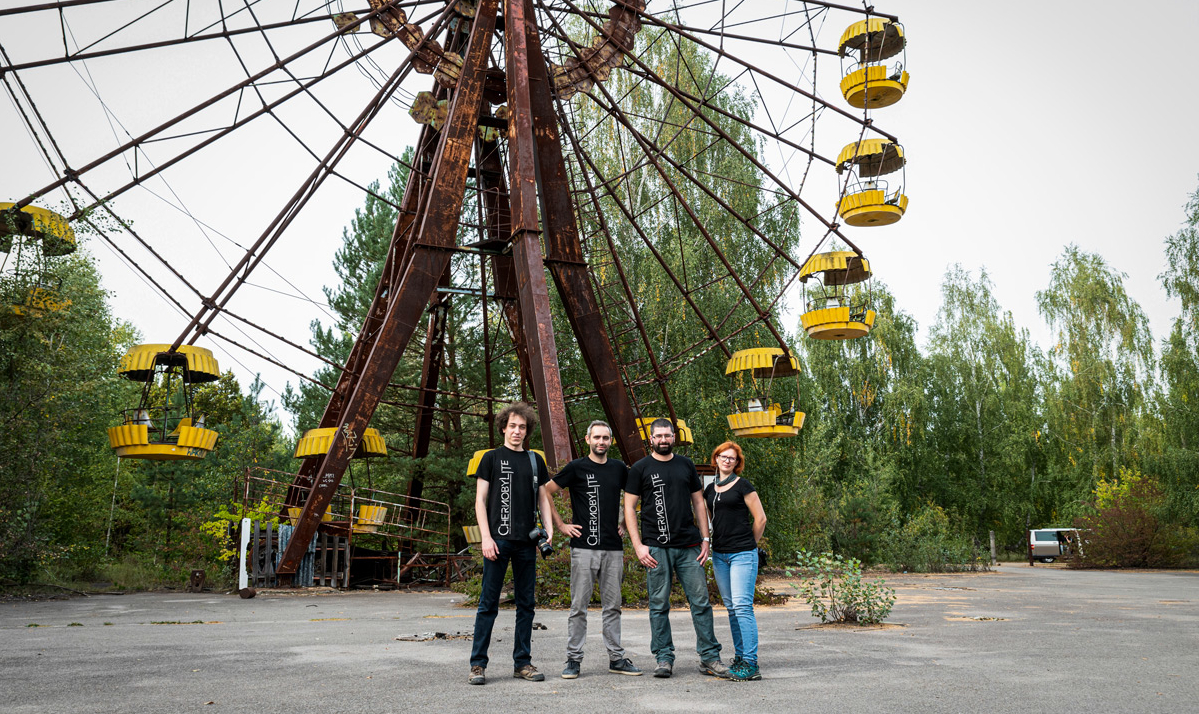
There are few places in the world as eerily evocative as Chernobyl. Much of it abandoned for decades, it remains a constant source of fictional and real accounts; a fusion of Cold War tension, nuclear threat, conspiracies and cover-ups. No wonder, then, that it has become such great fodder for games. The latest, survival horror RPG Chernobylite, is right around the corner, and ahead of its launch I chatted to creative director Wojciech Pazdur about the extra lengths the team went to as they recreated the infamous Exclusion Zone.
Photogrammetry is an increasingly popular method of creating realistic 3D environments through photography. Lots of snaps are taken of an object, and then that data is used to recreate it digitally, conjuring up a 3D model that can be used in the game. Pazdur, who was formerly a 3D artist and has a background in programming, decided to introduce photogrammetry at The Farm 51 around seven or eight years ago, seeing it as a technique that the team could use to make the creation of realistic environments "faster, easier and more accurate".
"The key advantage of photogrammetry is that the amount of detail you can capture is almost unlimited," Pazdur explains. "In regular 3D content creation, when the artists start with the polygonal modelling or 3D sculpting, they need to work by adding details to some simple meshes. So the more time you spend on creating some kind of model, the more detail you can add. The cost of creating the detailed model is the amount of time you need to spend adding detail to this model. But in photogrammetry, if you get a good camera, not an expensive camera, but simply a good camera, you can capture very detailed photographs; you can zoom and you can capture any data you want, and then you can include them in your recreated 3D model."
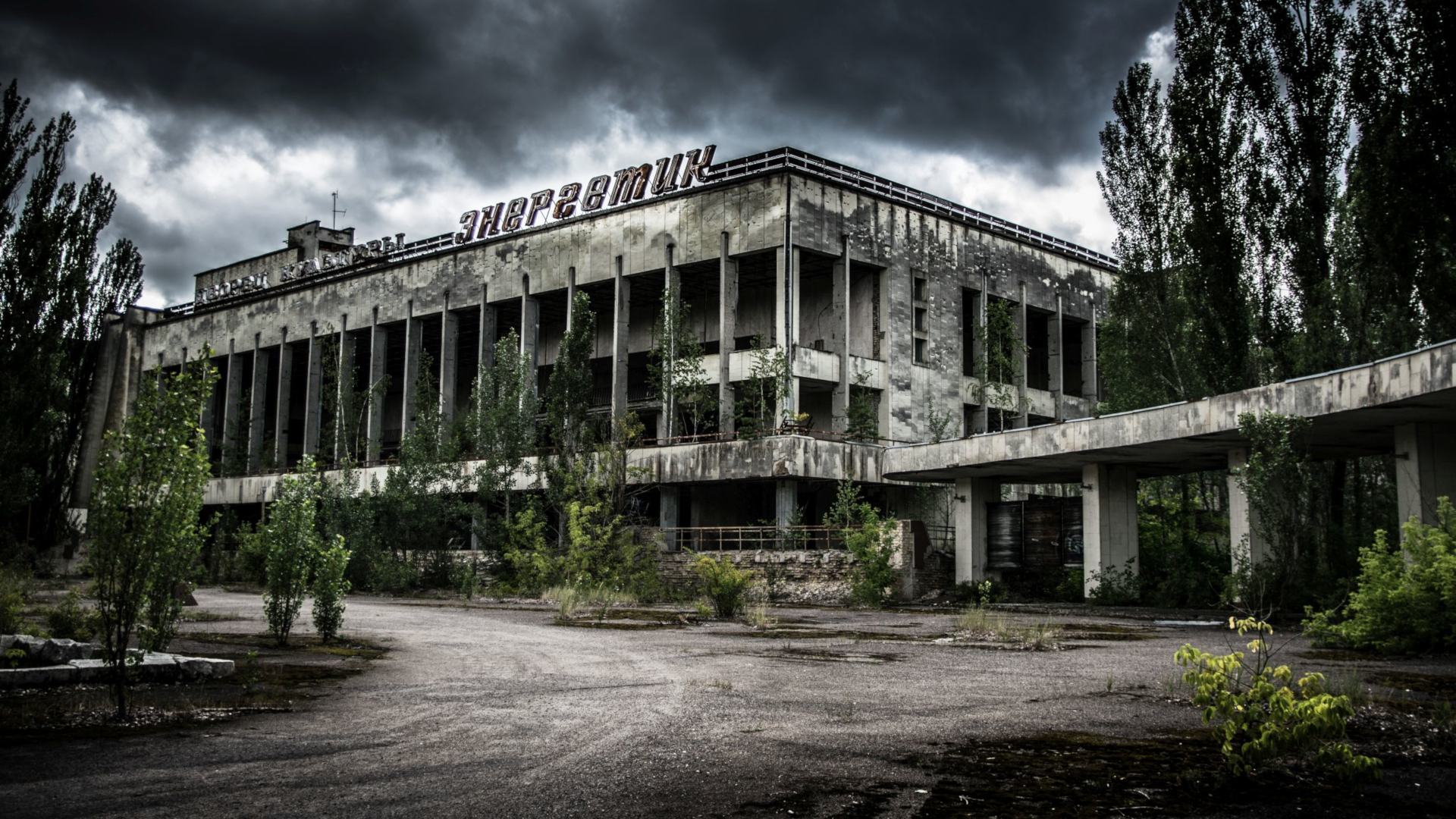
Traditional techniques had become too costly. "I blame the cost of today's videogames mostly on the cost of creating 3D content," says Pazdur. The Farm 51 started to experiment with photogrammetry during development of an earlier game, Get Even, and it proved to be effective. That led to the team discussing what the most interesting place to recreate with photogrammetry might be. They settled on Chernobyl.
Everyone knows about Chernobyl and, with the rise of tourism around the Exclusion Zone and the recent popularity of the HBO series, more people than ever are interested in visiting it. But it's still an intimidating place, so The Farm 51 wanted to create a way for people to experience it without physically being there. The team travelled from Poland to Ukraine and started work on a VR documentary.
While Pazdur lives around 1,000km from Chernobyl, there's still a personal connection. "My parents were both nuclear physicians in Poland. They were working in a university, and they were, among others, responsible for the new measurement of radioactivity. And actually the way I got to know about the Chernobyl disaster was not from the TV or the press, because it was kept [secret] for a few days. I remember the day when my father came home, and he told us to stay at home, because there is radioactivity in the air."
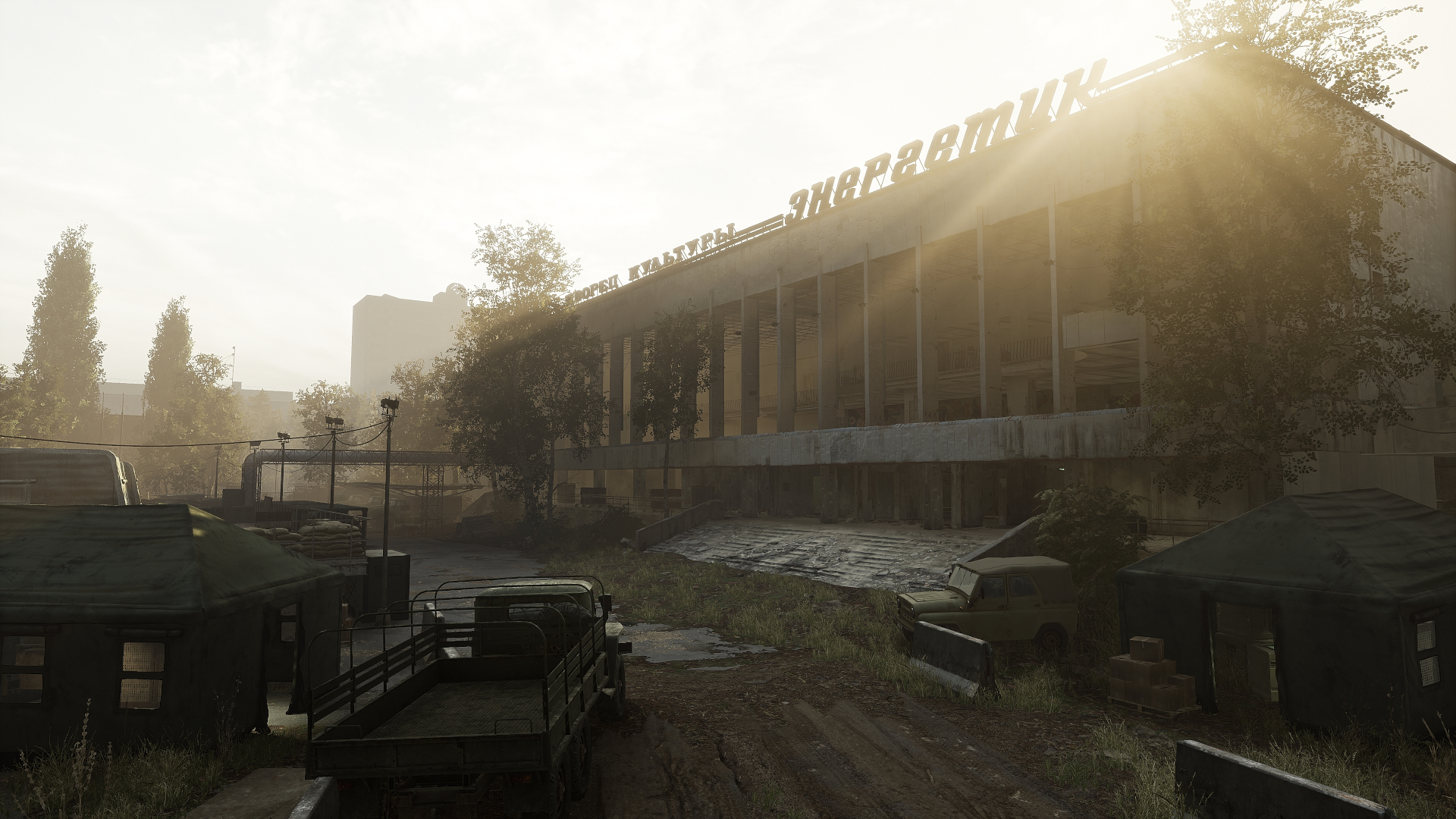
The level of radioactivity was safe, but due to the lack of information Pazdur's family didn't know if it was an accident, a natural disaster or even nuclear war. "Nobody knew." He recalls drinking iodine to stop his body from absorbing radiation. "I still remember these days. It was one of the most awful things that I ever experienced in my life, and I was a small kid." It's a harrowing reminder that the disaster didn't happen all that long ago, and how a lack of information made it so much worse.
The biggest gaming news, reviews and hardware deals
Keep up to date with the most important stories and the best deals, as picked by the PC Gamer team.
During the development of the VR project, the team realised that, if they were spending all this time trying to capture the area, they might as well make a whole game based on it. In 2017, The Farm 51 started making trips into the Zone not just to recreate it for a VR documentary, but for Chernobylite as well. Pazdur believes it might be the largest use of photogrammetry in a videogame, as the team was trying to capture almost everything.
Even with a tourist industry now encouraging adventurous travellers to visit, working in Chernobyl is far from simple. It might be safe for visitors, but it's still contaminated, meaning there are lots of rules and protocols to follow, and visits can't be long. "There's a limited amount of days or amount of hours you can spend in certain locations and not get irradiated," says Pazdur. Paperwork had to be filled out, government agencies had to be contacted, and permission had to be gained to use drones—normally not allowed in the Exclusion Zone due to national security. "There are a lot of people you need to deal with if you want to try to do something more than just visiting for a few hours."
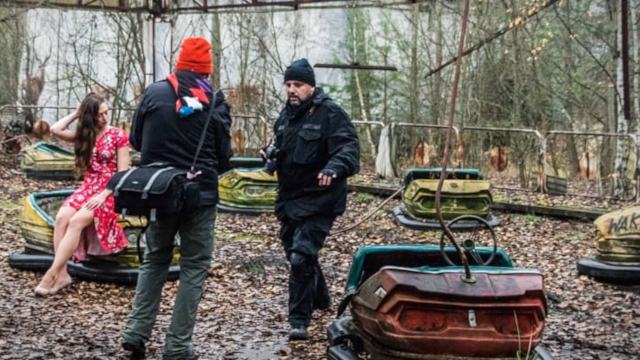
Usually, the trips would involve spending between three to five days in the Zone. But the team couldn't stay there overnight, so each day they had to go through the safety controls and checkpoints to get in, and then go through it all again when they left. It sounds pretty stressful, being checked to make sure you're not radioactive multiple times a day, but Pazdur says he got used to it.
There's a limited amount of days or amount of hours you can spend in certain locations and not get irradiated.
Wojciech Pazdur, creative director
"At some point, you really don't care," he says, laughing. "Of course the first trip was stressful, because we were afraid. But at some point in time, we realised by talking to the people who have been living and working there for years that there is no real threat if you know how to behave. There are dangerous places in the Zone, but if you want to enter the Zone legally and are not some kind of illegal stalker, you need to have with you a specially-trained guide or advisor, who is simply taking care and telling you where you can go and where you can't go."
Working in the Zone was still full of complications. There's no electricity and no internet, for instance, which made problems for a team that required both to capture and then process all of their data. The Farm 51 had to bring gas generators and lots of batteries so it could keep working. That created another problem, because there's a limit to how much of that stuff you can bring with you if you're flying to your destination. In a lot of places in the Zone, it's not possible to use your phone, either, so the team ended up using walkie talkies to stay in contact.
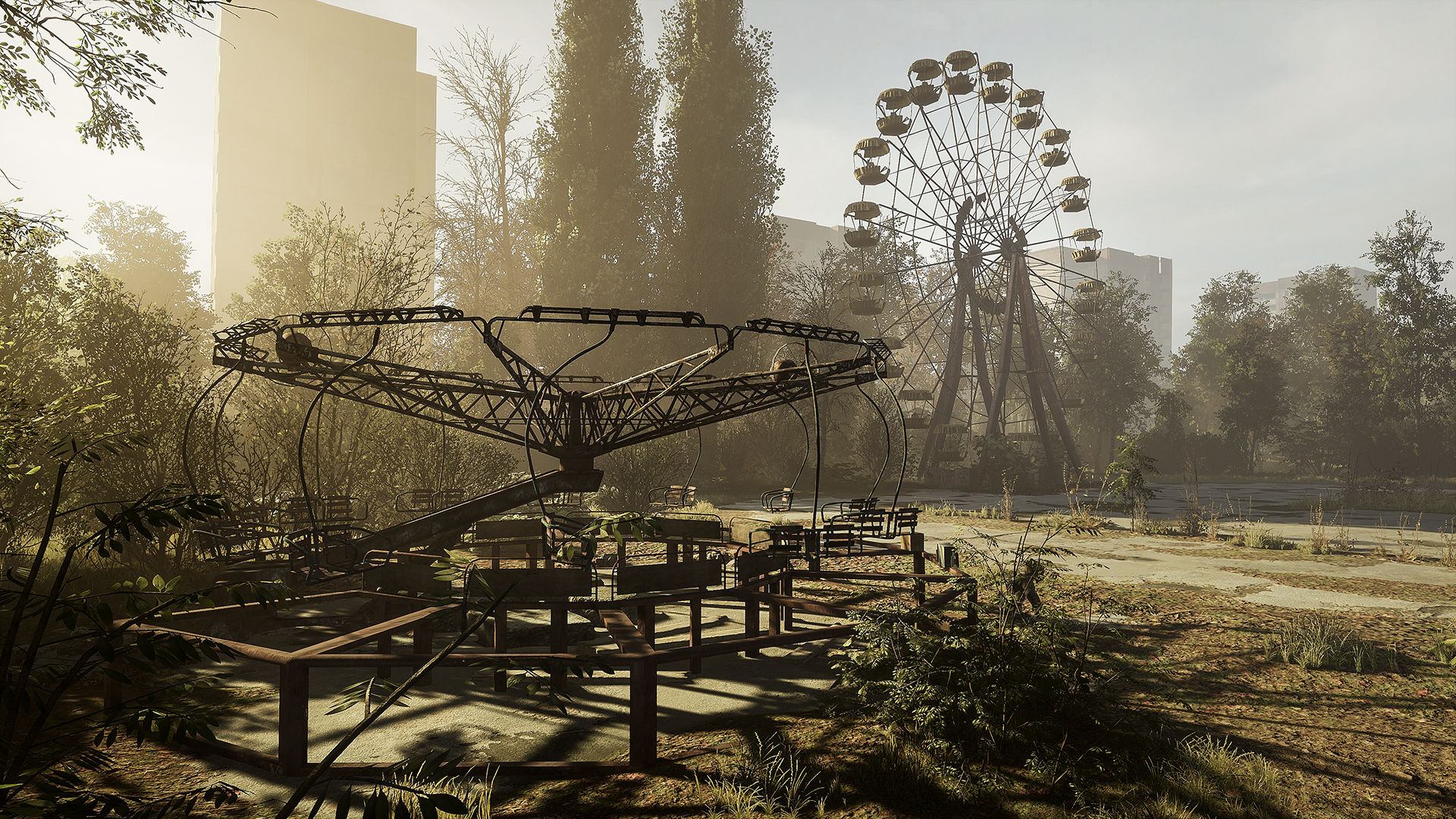
Chernobyl's security forces were also a bit suspicious. The team was bringing a lot of special equipment into the Zone, and Pazbur recalls that they were treated like they were bringing in espionage gear. "It's totally different from the way you normally work on a videogame. And some people love it. And some people are not good with it." Some members of the team were too afraid to go, while others were talked out of it by their families. While Pazbur says that science assuaged his fears, he understands why other people didn't want to join him. "Chernobyl is fascinating for people because it's the story of fear," he adds. Even if it's technically safe in small doses and if you don't go off the beaten track, it's hard to escape its grim history. And while that attracts some tourists, it's equally off-putting for others.
This is of course good news for a developer making a horror game—Chernobyl is full of inspiration. It wasn't always going to be a horror game, though. The Farm 51 originally wanted to design a game where you explored the Zone and uncovered a conspiracy theory, but without any supernatural elements. There was stealth, and you'd have to sneak past security and avoid them, but by grounding it in the reality of the Zone—where getting caught usually just means you get slapped with a fine, and where the security forces sometimes don't even carry weapons—it didn't create the sense of danger or tension that players expected. So it was reworked to include more danger, more suspense and more fanciful additions.
Chernobylite is now part fantasy, then, with monsters and videogame bad guys to worry about, but Pazdur still wanted to capture the feeling that he and the team felt when they first entered Chernobyl, where even without mutants and ghosts it was still capable of creating a sense of fear and dread. And sadness, too. It's a lonely, abandoned place where a terrible disaster took place only a few decades ago. And by putting players in the shoes of a physicist and former Chernobyl Power Planet employee searching for a missing loved one, this is brought to the fore. Despite extra flourishes and horror, this is still a replica of the real Chernobyl—though one with some tweaks to make it more enjoyable to explore in a videogame.
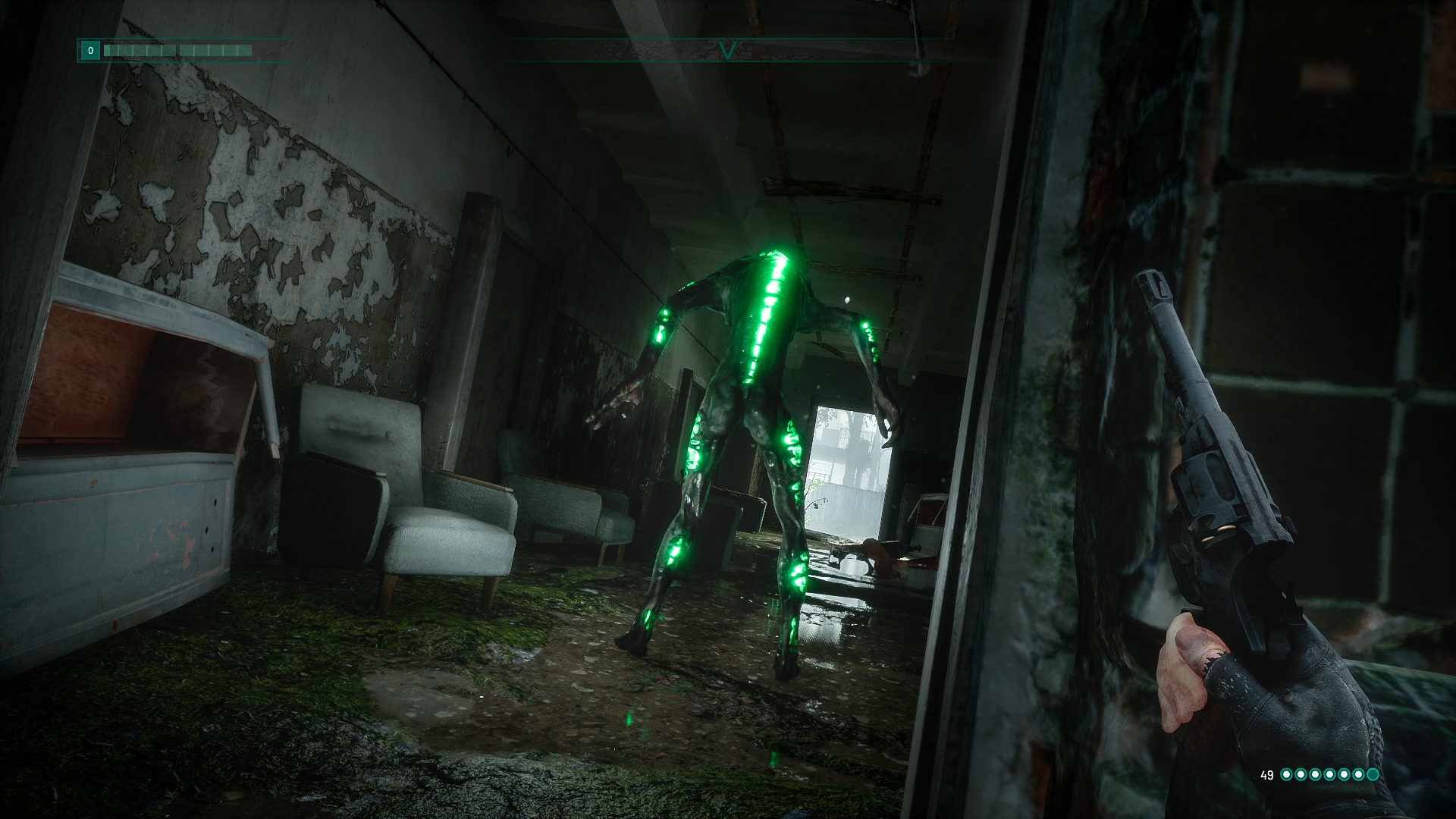
One of the complications that arises when rebuilding real-world locations in a game is that even perfect recreations can feel a bit off when you're actually playing. "If you're using photogrammetry scanned environments," says Pazdur, "everything feels tight, and you feel a bit claustrophobic because in the real world you are moving slower than in the videogame." Now, some locations should feel claustrophobic, that's a key element of horror, but sometimes the result is something that actually feels less realistic. Thus, the scale of rooms and certain objects had to be altered to ensure it felt natural. Photogrammetry might make things easier, but it's not enough to just scan the environment and pop it in the game.
The Farm 51 hasn't just been trying to recreate the bricks and mortar that make up Chernobyl—there's also the wilderness around it. It's a place full of natural beauty, and much of the area has been reclaimed by nature. And along with capturing the natural world, the team has attempted to capture Chernobyl's moods, and how it changes along with the seasons. "I really wanted this place to feel both beautiful and dangerous at the same time," says Pazdur, "because that was exactly how, at least visually, I was feeling about it."
For Pazdur and other members of the team, it was a trip back into the past, where things they remembered from their childhoods, from the architecture to the furniture, were frozen in time. But he also feels that it's a meaningful place today. "The reason why it's worth it to tell this kind of story today is that we are living in times where the problem is not access to information, but how we're filtering the information. We are all the time bombed with information all around us. And the same as in the past, we still don't know what is true and what is not."
Chernobylite has been in Early Access since 2019, but it's now close to launch. You'll be able to take a trip into the Zone and experience the full game on July 28.
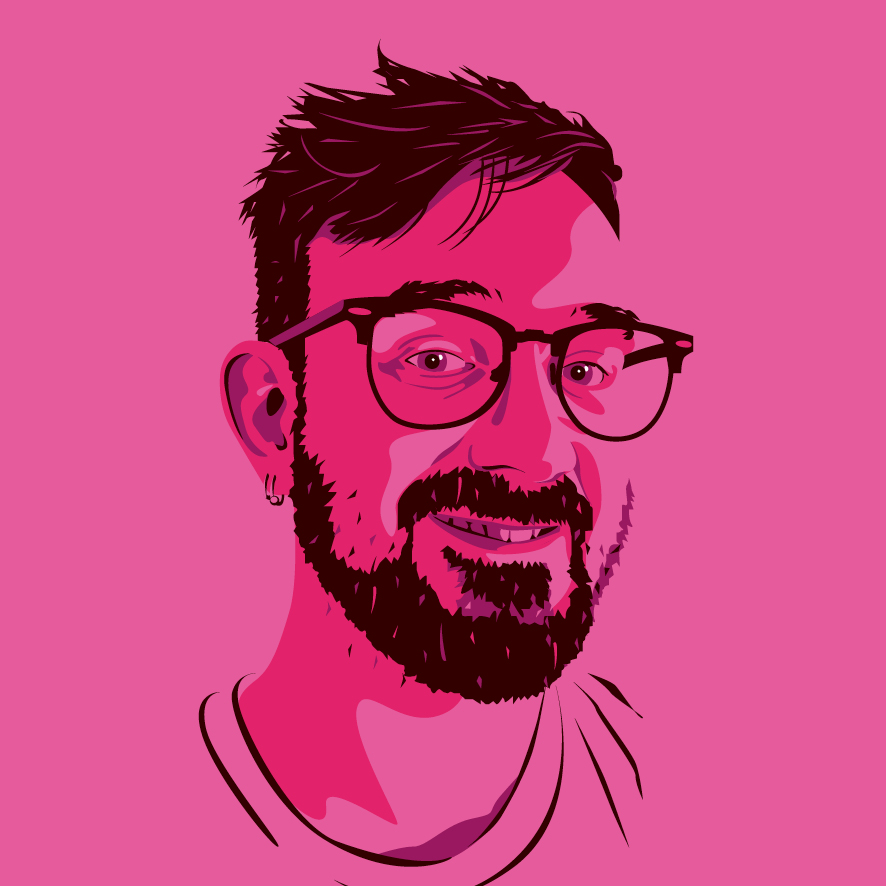
Fraser is the UK online editor and has actually met The Internet in person. With over a decade of experience, he's been around the block a few times, serving as a freelancer, news editor and prolific reviewer. Strategy games have been a 30-year-long obsession, from tiny RTSs to sprawling political sims, and he never turns down the chance to rave about Total War or Crusader Kings. He's also been known to set up shop in the latest MMO and likes to wind down with an endlessly deep, systemic RPG. These days, when he's not editing, he can usually be found writing features that are 1,000 words too long or talking about his dog.

